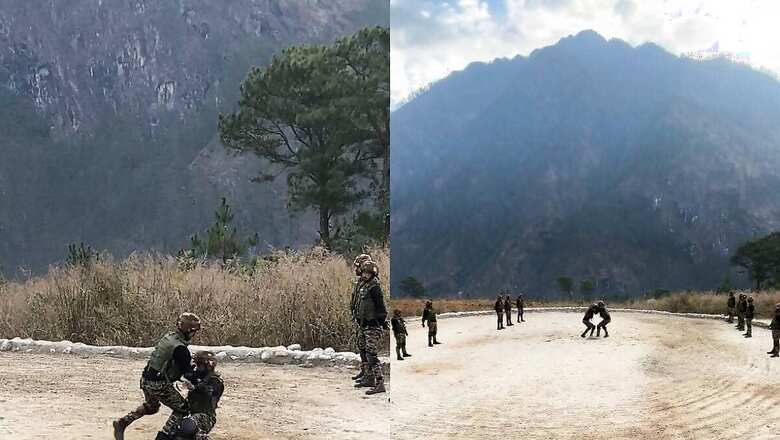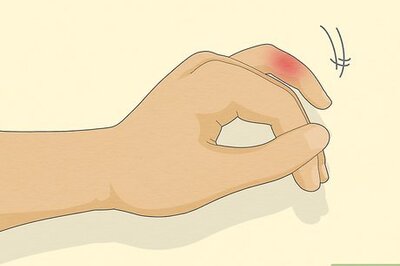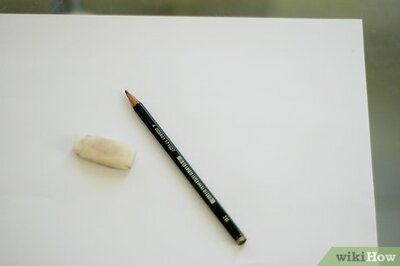
views
The June 2020 clash in the Galwan Valley of Eastern Ladakh, in which 20 Indian soldiers were killed, was the fiercest border conflict with China to have occurred after the 1962 war. It led to a military standoff between the two countries.
At patrolling point 14, Indian and Chinese troops clashed for six hours in a steep section of a mountainous region. While casualties were higher on the other side, and the clash demonstrated the unarmed combat superiority of Indian Army troops in such harsh conditions, several lessons were learned from these clashes.
The clash prompted the Indian Army to incorporate a ‘scientific approach’ to traditional martial arts of India, resulting in the integration of the Army Martial Arts Regime (AMAR) into its routine. Now, every field unit of the Indian Army practices AMAR.
As per officials, it was November 2020, when the AMAR was officially incorporated by the Training Command of the Indian Army. Even though several regiments of the Indian Army were practicing regional martial arts, the modules in the regime were tailored taking elements from all these arts. It has been made a part of the routine since then.
“Incorporating the rich diversity of regional martial arts, the AMAR training modules have been meticulously crafted to provide soldiers with comprehensive preparation, addressing not only professional unarmed combat skills but also emphasising physical and mental fitness,” said a senior official from the Ministry of Defence. “We offer both AMAR Basic and AMAR Advanced modules for troops,” he added.
Inspired by regional martial arts
The regime has been implemented keeping regional martial arts in mind. The regional forms like Gatka of Punjab, Kalaripayattu of Kerala, Thang-Ta of Manipur were considered while designing these modules.
“A sincere and regular practitioner must aim to become a weapon in himself. The modules of AMAR train a soldier and make him a weapon in himself,” the officer said.
Different Modules in AMAR
Both basic and advanced AMARs have training modules. There are seven modules in both regimes which range from footwork, close quarter combat to takedowns, chokes, and improvised work.
The focus of the approach is to train a soldier to deal with situations like what was seen in 2020 during the Galwan clash. The trainer also teaches them the basics of combat for example the vital spots in a soldier’s body.
Use of handmade weapons
One essential thing that has been highlighted time and again is the use of handmade weapons by Chinese soldiers. As per agreements, no firearms are allowed at LAC but that doesn’t stop them from bringing knives, swords, clubs, axes, and several modified hand-made weapons that can lead to fatal injuries. This was widely reported during Galwan clash and also at the time when Chinese troops tried to change the status-quo in Tawang sector of Arunachal Pradesh in 2022.
“There are several rapid assault techniques in the training modules. Since these are mixed martial arts not just from India but across the world, they provide you with different offensive and defensive combat techniques. It has got a mix of Pekiti-Tirsia Kali, Karate, Wrestling, Judo, and Others,” another officer added.
He further said, “There are principles and these principles include ruthlessness, situation adaptation, effective strikes, and several others. The whole regime is based on conditions that can arise in UAC.”
Assessment included
AMAR offers a comprehensive array of training modules, encompassing both basic and advanced formats, with a rigorous assessment component. According to an officer, trainees undergo a 50-mark evaluation across various modules. To complete the training, individuals must achieve a minimum score of 35% in each category and 40% overall.
Troops actively involved in training
A team from CNN-News 18 recently travelled to the Lohit Valley of Arunachal Pradesh. They noticed that the Army in key locations such as Walong, Hayuliang, Kibithu, and Kaho were actively involved in the martial arts. These units adhere to a rigorous daily routine, which includes scheduled sessions for Unarmed Combat (UAC) alongside martial arts training.
Captain Kartikey Jaiswal, stationed in Kibithu, emphasised the relentless challenges encountered by soldiers in the region. He mentioned challenges ranging from swift rivers and ravines to relentless rains and treacherous terrain. He said soldiers undergo continuous training, with martial arts playing a crucial role in equipping them to navigate and overcome these adversities.


















Comments
0 comment